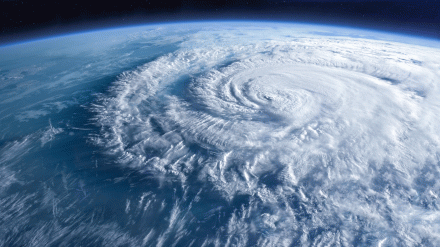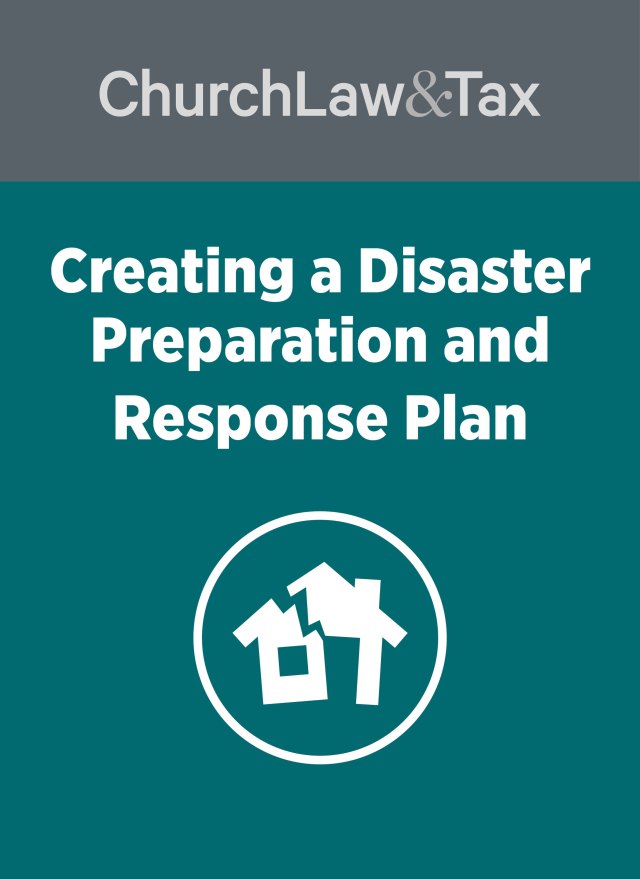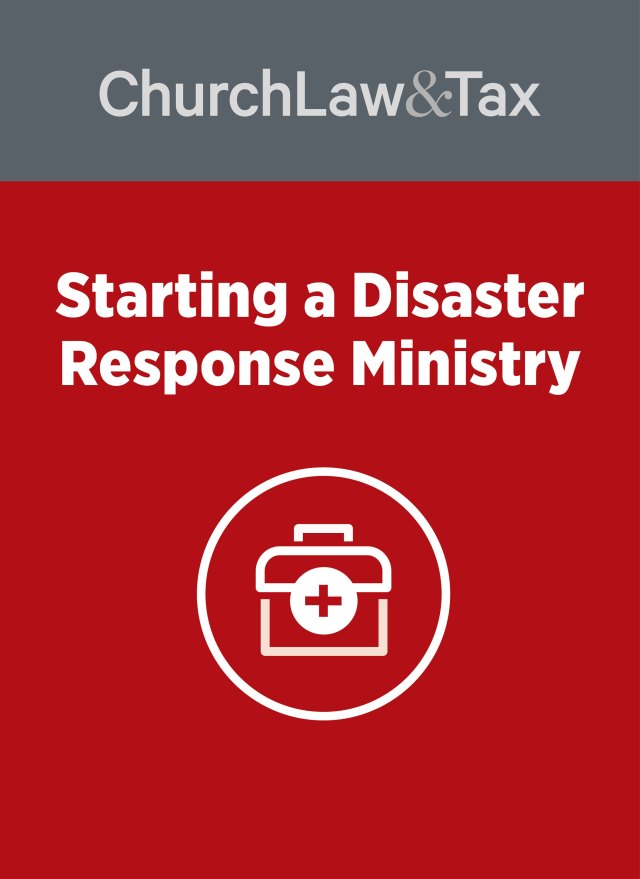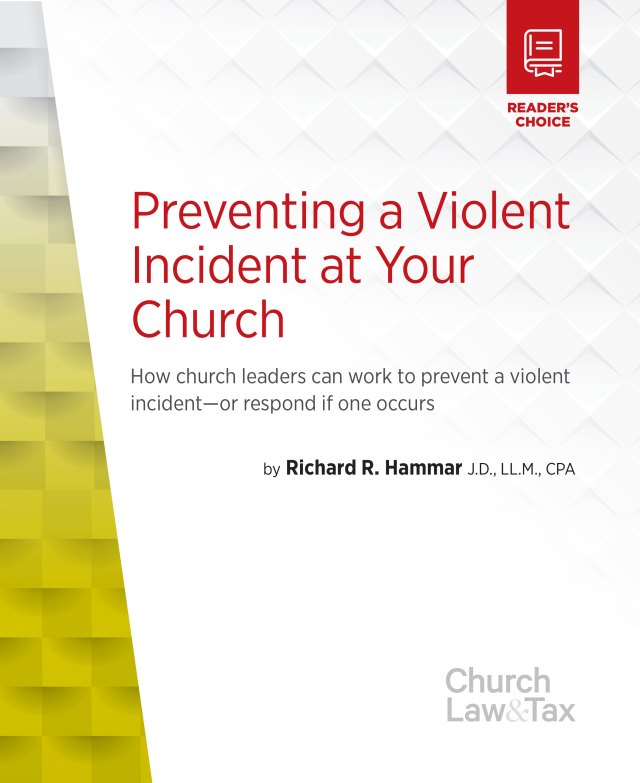Before a hurricane strikes, you can help prepare your church property in various ways to reduce and minimize disaster risk and damage.
The path of destruction and the fallout caused by disasters can be random. Despite planning and mitigating preparations, there may be times when no course of action could have prevented property damage.
There are other cases in which churches—seemingly miraculously—go unscathed or experience just minor damage.
Regardless, you should still take precautions where you can to enhance your property’s ability to weather adversity. You should prepare your church to the best of your abilities and resources, as though your church will be the one still standing after the storm. Doing so will better position your church to continue to minister to those around you once that storm passes.
Here are several strategies you can implement to help get your church property ready, as well a worksheet to help guide your preparedness efforts.
What to Do Before the Storm Strikes
The following steps are taken from a FEMA guide and are examples of easy-to-implement, low-to-no-cost mitigation steps.
- Remove all debris from culverts, streams, and channels to allow the free flow of potential floodwaters.
- Clean storm drains and gutters and remove debris from around the church.
- Move shrubs and other landscaping away from the sides of the building.
- Clear dead brush and grass from the property so that it won’t serve as fuel to spread fire.
- Install cabinet locks.
- Secure televisions, computers, or other heavy appliances and equipment with flexible straps.
- Anchor bookshelves and large cabinets to walls.
- Strap water heaters to walls.
- Secure or remove items that could become projectiles in high winds.
- Consider raising water heaters and other appliances to avoid flood damage.
- Cover and board up windows.
Note: these steps are examples of ideal ways to prepare, but they should only be implemented if you have time to prepare before the disaster strikes. Don’t try them if doing so will put you or others in danger, and take evacuation notices seriously.
What to Do After a Hurricane Strikes
Though you may be anxious to see the condition of your property, do not return to it before local officials have determined the area is safe.
Carefully go around the outside and look for loose power lines, gas leaks, and structural damage. If there is any doubt about safety, have your facility inspected by a qualified building inspector or structural engineer prior to entering.
Once it is safe to enter your property, you should take any steps you can to prevent further loss or damage:
- Do what you can safely do to attend to damages that, if left unaddressed, could lead to more significant losses.
- If your roof was damaged but is still largely intact, you might have someone with construction experience from your congregation patch the damaged area with a tarp.
- Be prepared for the fact that it may take the insurance company days, weeks, or even months before they can assess your damage.
- As soon as you have phone access and have had a chance to check on your property, you should report a claim.
- Ask your insurance agent for advice about what other steps you might take to help prevent damage.
- Contact your insurance provider as soon as you can to get guidance regarding your policy.
- Consider seeking volunteer help from an established disaster relief organization that’s skilled in building repair.
A Word of Caution
After major disasters, most people who come in to help repair damage mean well and truly want to help. Others, however—including fake companies—may respond in order to take advantage of people, including churches. One pastor I interviewed after Hurricane Katrina said that a “construction company” offered to repair their church roof, but they needed payment up front. Long story short: once the money exchanged hands, the construction company never returned. When the church tried to track down the company, they found out that the company didn’t really exist.
Property Preparedness Worksheet
Building Description
INSTRUCTIONS: Provide some basic building data by completing the line items below. The emphasis should be on information that may be helpful to your congregation leadership as well as outside sources, such as emergency services personnel.
Facility Features
|
Occupancy type (church, office building, etc.): |
|
Total square footage: |
|
Year built/date of most recent renovation: |
|
Number of stories (is there a basement?): |
|
Type of construction: |
|
Insurance company: |
|
Describe any unique features (inside or outside): |
NOTE: Attach any floor plans of the facility at the end of the document.
Building Supplies and Safety
INSTRUCTIONS: Find (or purchase or ask others to donate) these items in your church building. Document where the items can be found and check to make sure they are working properly. Keep this list up to date to ensure resources remain available and are working properly.
Emergency Supplies and Equipment Locations:
-
Portable radios and extra batteries:
-
Emergency first-aid supplies:
-
Flashlights and extra batteries:
-
Stored drinking water:
-
Emergency (three-day) food supply:
-
Basic tool kit:
-
Fire alarm system:
Location of fire alarm:
-
Location of fire extinguishers:
-
If system monitored by outside agency, name and phone:
-
Sprinkler system (water flow valves and standpipes, including tamper alarms):
-
-
Exits: information on fire escapes (type and location):
-
Information on fire doors (if applicable):
Utility Shutoffs and Tools
-
Main gas valve:
-
Crescent wrench or gas shutoff tools:
-
Main water valve:
-
Electrical fuse box/circuit breaker:
-
Emergency or portable generator (if applicable):
Inventory of Neighborhood Resources
-
Where can you rent or borrow a generator?
-
Where is the nearest medical treatment facility? (Attach driving and walking directions.)
-
Where is the nearest fire station?
-
Where is the nearest police station?
-
Where can you go for additional water?
-
Where can you go for additional food supplies?
-
Where can you go for additional medical supplies, medicines, and special equipment?
- Vital Records Checklist (may include but are not limited to):
- Articles of incorporation
- Artwork (e.g., stationery, logo)
- Blank checks and account information
- Board minutes and rosters
- Bylaws
- Computer passwords
- Contracts
- Diagram of building layout
- Donor records
- Emergency plan
- Financial statements (bank accounts, credit cards)
- Insurance information
- Inventory of organization equipment
- Leases/deeds
- Personnel records/payroll information
- Photographs of the facility and key equipment
- Tax exemption status certificate
- Vendor records
- Volunteer records
- Used with permission from Bloomington Public Health. L. Brodsky, M. Drews, K. Henslee, N. Kafumbe and M. Schweizer, “Ready, Set, Go! Faith Community Emergency Preparedness Toolkit.” Non-exclusive permission to photocopy for congregational disaster preparedness use is granted by Bloomingdale Public Health, 1800 West Old Shakopee Road, Bloomington, MN 55431, www.bloomingtonmn.gov
- Jamie D. Aten is founder and executive director of the Humanitarian Disaster Institute at Wheaton College, Illinois, and author of the Disaster Ministry Handbook . In 2016 he received the FEMA Community Preparedness Champion award at the White House. Follow him on Twitter @drjamieaten and jamieaten.com. Adapted from Disaster Ministry Handbook by Jamie D. Aten and David M. Boan. Copyright (c) 2016 by Jamie D. Aten and David M. Boan. Used by permission of InterVarsity Press, P.O. Box 1400, Downers Grove, IL 60515, USA, www.ivpress.com.





